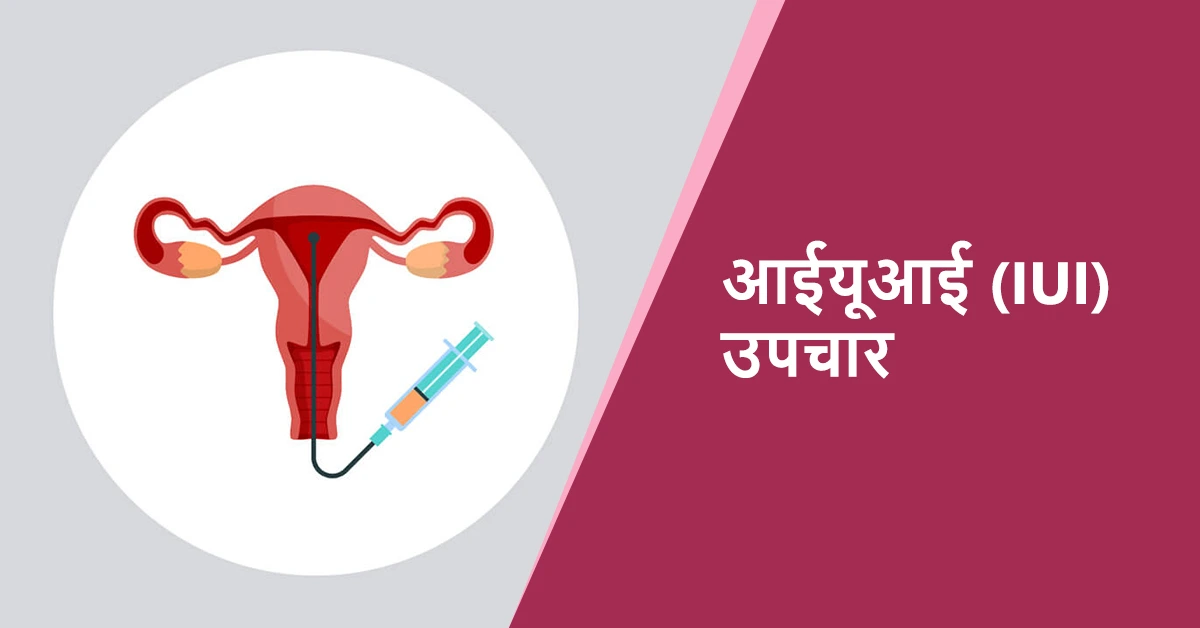IUI Procedure: How Does IUI Work Step By Step?

Intrauterine Insemination also known as artificial insemination is a non-invasive ART procedure. The procedure is simple, easy to perform, does not include extreme effort from the couple and costs less than advanced procedures such as IVF and ICSI. Generally, IUI is recommended for couples with good ovarian reserve and semen parameters, but with associated problems such as PCOS, minimal endometriosis, borderline sperm counts and motility, and also for unexplained infertility.
What Happens During IUI Treatment
On Day1, 2 or 3 of the menstrual cycle, the female partner is required to visit the doctor for a baseline ultrasound.
Tablets or injections to stimulate the growth of multiple follicles in the ovaries are then prescribed. If you have any doubt, please ask your consultant to advise the dos and donts during this period. If you are overweight or obese then your doctor might advise you to cut down on your weight by advising dietary or exercise modifications before starting the treatment.
Further ultrasounds will be advised over the next few days to monitor the growth of your follicles. The follicles usually take about 10-11 days to be ready. It is common to feel a sense of panic and stress at this stage. But it is important to keep yourself calm and free of stress.
Take Your Mental Health Into Account
It’s okay to stress about the procedure. But let it not affect your health. Some clinics offer counselling sessions for their patients to guide through the psychological implications of fertility treatments. Here is a story of how Nova IVF Fertility helped a patient with counselling.
Once the follicles have matured, a hormone injection will be administered to trigger the egg release. This HCG injection helps ovulation to occur in the next 36-40 hours. The IUI is therefore planned 36-40 hours after this trigger injection, in order to time it as close to ovulation as possible.
What Happens On The Day Of IUI Treatment
The male partner is asked to come to the clinic with an ideal abstinence period of 2-5 days, to give his sperm sample for insemination. The semen sample is then “washed” to eliminate the excess liquid, the dead and weak sperms, debris etc, and concentrate the healthiest, most motile sperms into a small volume. This process may take upto an hour. The female partner meanwhile is asked not to void urine, as a full or semi-full bladder makes the IUI process smoother.
With the help of a fine catheter, the doctor will gently introduce the washed sperm into the uterine cavity, in order to increase the chances of the sperms reaching the released eggs and fertilising them. The procedure lasts for less than a minute. You may feel some amount of discomfort, which is usually minimal, however the procedure is not otherwise painful.
The female partner is then prescribed some form of progesterone support and folic acid. Please confirm with your doctor about continuing any other routine medication you have been taking before.
The Big Wait
Couples are advised to wait for two weeks, and maintain their daily routine. There may be certain side effects to progesterone medication. You might experience mood swings, cramping, spotting and bloating post-procedure. However, it is not necessary that every woman would feel them. Symptoms may also differ from one woman to another.
Two weeks later, you can take a home pregnancy test to confirm if you are pregnant. The success rate of IUI in women under the age of 35 is 10 – 20% and it decreases with increase in age. The main factors to consider for the success rate is the woman’s age and the semen parameters.
What Happens In Case of Multiple IUI Treatment Failures
ART procedures can fail for a number of reasons. Sperm motility, endometriosis, PCOS, lifestyle, health of a uterus and many more. In some cases, pregnancy failures or infertility is unknown. The best next step is to figure out why there are multiple failures.
Most couples who succeed with IUI, conceive in a maximum of three attempts. If there is no pregnancy in three cycles, undergoing further IUIs does not add much value, and it is advisable to proceed with IVF or ICSI. Depending on your response to the IUI cycles and your past history, your doctor may advise IVF sooner if need be.
IVF has a 50-60% overall success rate per cycle for women under the age of 35 years.
 Infertility Counselling
Infertility Counselling Female Infertility Treatment
Female Infertility Treatment Andrology Treatment
Andrology Treatment Fertility Enhancing Surgeries - Female
Fertility Enhancing Surgeries - Female Fertility Enhancing Surgeries - Male
Fertility Enhancing Surgeries - Male Endoscopy Treatment
Endoscopy Treatment IUI Treatment
IUI Treatment IVF Treatment
IVF Treatment ICSI Treatment
ICSI Treatment Advanced IVF Solutions
Advanced IVF Solutions Embryology
Embryology Vitrification Egg, Embryo, Sperm Freezing
Vitrification Egg, Embryo, Sperm Freezing Preimplantation Genetic Testing (PGT)
Preimplantation Genetic Testing (PGT) Donation Program Embryo / Egg / Sperm
Donation Program Embryo / Egg / Sperm Self-cycleTM IVF
Self-cycleTM IVF

 Self-cycleTM IVF
Self-cycleTM IVF









